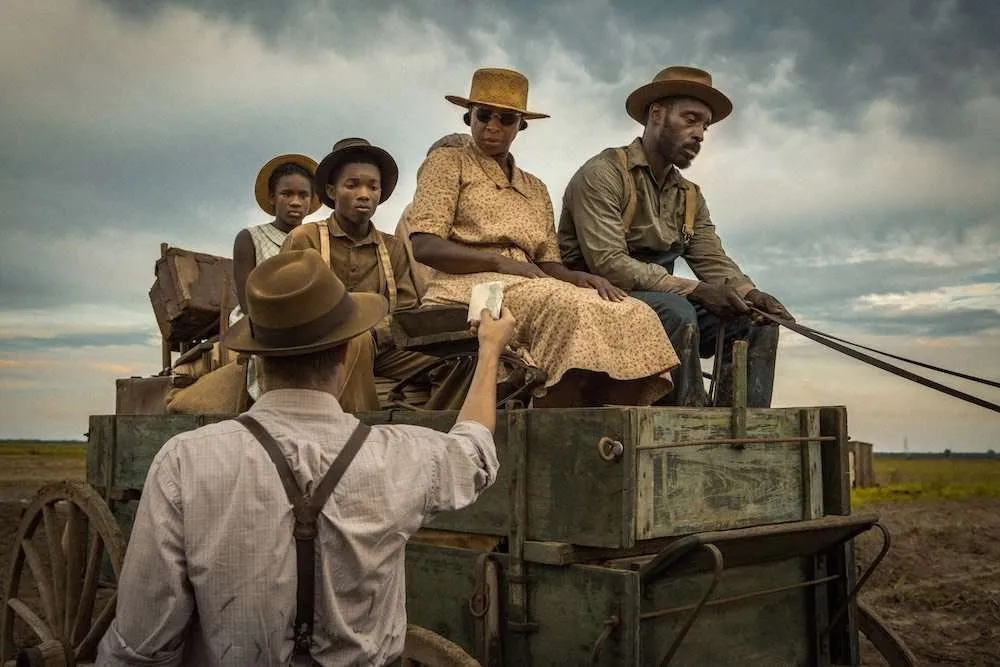History
Aunt Jemima: It was Never About the Pancakes
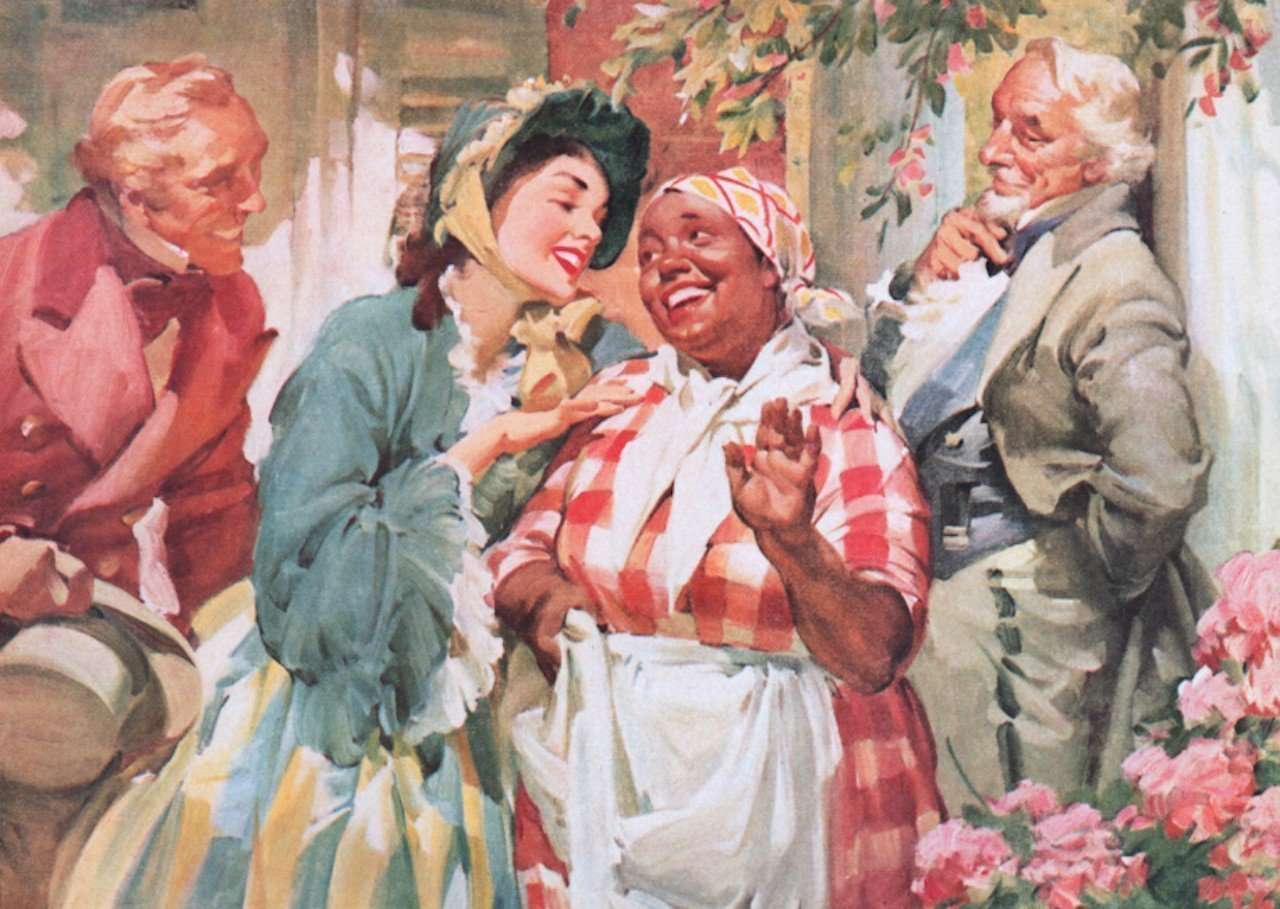
It is nearly impossible to have grown up in America and not be familiar with Aunt Jemima. However, when thinking of Aunt Jemima, people often associate a person to the name not the pancakes. Before Aunt Jemima came to be an American icon, an initial interest needed to be established. This is the story of the woman who became a food, that became a product, which became one of the most recognizable figures in history: Aunt Jemima.
Aunt Jemima was first introduced as a character in a minstrel show – an American form of entertainment developed in the late 19th century. Each show consisted of comic skits, variety acts, dancing, and music. The shows were performed by white people in blackface for the purpose of playing the roles of black people.
Minstrel shows portrayed black people as dimwitted, lazy, easily frightened, chronically idle, superstitious, happy-go-lucky buffoons.
The inspiration for Aunt Jemima came specifically from the song “Old Aunt Jemima” written by a black performer named Billy Kersands in 1875. It was a staple of the minstrel circuit. The song was based on a song sung by slave hands. “Old Aunt Jemima” was performed by men in blackface. One of the men depicted Aunt Jemima – a Slave Mammy of the Plantation South.
The lyrics tell of the promise to be set free yet remaining a slave forever. “My old missus promise me . . .When she died she-d set me free . . . She lived so long her head got bald . . . She swore she would not die at all . . .”
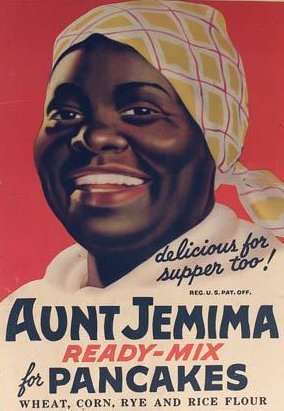 While the lyrics depicted a reality, Aunt Jemima did not. There was a big difference between the stage Mammy and the actual female household slave. In fact, many argue that the Slave Mammy that became the stereotype never actually existed. Well-known New York blogger, Julian Abagond had this to say:
While the lyrics depicted a reality, Aunt Jemima did not. There was a big difference between the stage Mammy and the actual female household slave. In fact, many argue that the Slave Mammy that became the stereotype never actually existed. Well-known New York blogger, Julian Abagond had this to say:
“The Mammy pictured female household slaves as: fat, middle-aged, dark-skinned, undesirable . . . happy to serve whites, always smiling . . . The ugly truth is that they were: thin . . . young . . . light-skinned, a daughter of rape; desirable to white men and therefore raped, utterly powerless, extremely unhappy . . .”
WATCH this short video based on this article:
The Mammy was created by white Southerners to redeem the relationship between black women and white men within slave society. Slave owners sexually exploited and abused their female slaves. Catherine Clinton’s book The Plantation Mistress: Woman’s World in the Old South, notes that “Mammy was made to appear unattractive so no white man could want her over his white wife therefore ‘proving’ that white men did not find black women sexually desirable.” She was also proof that black women were happy as slaves. The Mammy helped put to rest any worries white people may have had around her, or women who looked like her.
RELATED: Bessie Coleman: The Incredible & Tragic Life of First Black Woman Pilot
Aunt Jemima’s pancake mix began in 1889 when two speculators, Chris Rutt and Charles Underwood, bought a flour mill. Together they developed the idea of a self-rising flour that only needed water. Initially, it was called ‘Self-Rising Pancake Flour’. Rutt was inspired to rename the mix after attending a minstrel show, featuring “Aunt Jemima.” Rutt decided to use the name and the image of Aunt Jemima to promote his new pancake mix. However, Rutt and Underwood were unable to make the product a success and in 1890 they sold the business to the Davis Milling Company. The Davis Milling Company developed an advertising plan to use a real person to portray Aunt Jemima. The woman they found was Nancy Green.
Nancy Green was born a slave in Kentucky in 1834.
In 1863 the Emancipation Proclamation set slaves free and Green moved to Chicago after the Civil War. There she worked for the Walker family as a domestic servant. It was the Walkers who brought Green to the Davis Milling Company to audition for Aunt Jemima. She was 56 at the time. Nancy Green debuted as Aunt Jemima at the 1893 World’s Exposition in Chicago. The Davis Milling Company constructed the world’s largest flour barrel to grab people’s attention. Then they put Nancy Green on display (much like the flour) and gave her an act. She dressed as Aunt Jemima, sang songs, cooked pancakes, and told romanticized stories about the Old South – a happy place for blacks and whites alike, now accessible only by nostalgia, or by buying Aunt Jemima’s pancake recipe.
Green was a huge success. Her booth attracted so many people that special policemen were assigned to keep the crowds moving. The Davis Milling Company received over 50,000 orders, and the fair officials awarded Green a medal and certificate for her showmanship. After the Expo, Green signed a lifetime contract with the company and traveled on promotional tours across the country. By 1910 more than 120 million Aunt Jemima breakfasts were being served annually, roughly equal to the population of the country. Green as Aunt Jemima was so successful that in 1914 the company renamed itself, ‘The Aunt Jemima Mills Company.’
RELATED: The Silent Parade of 1917: Why the Forgotten March Matters
The Davis Milling Company’s marketing plan was brilliant. They delivered their customers something they had always wanted but could never have: a ‘real life Mammy’. Along with the pancake mix, pamphlets were given out telling Aunt Jemima’s ‘life story’. According to the pamphlet, she had been the house slave of Colonel Higbee, whose plantation was known across the South for its delicious pancakes. After the war the Davis Milling Company, who had heard of the pancakes, paid Aunt Jemima in gold to share with them her secret recipe. That was the kind of feel-good story people wanted to hold onto. And with the pamphlet and Aunt Jemima’s famous pancake mix, they could.
Aunt Jemima’s ‘secret’ pancake recipe was nothing more than wheat flour, corn flour, lime phosphate, and salt. But that wasn’t important. The Davis Milling Company weren’t selling pancakes; they were selling The Mammy fantasy. The only ingredient that really mattered was Aunt Jemima.
The Aunt Jemima fable formed the background for decades of future advertising. Davis hired James Webb Young to create advertisements featuring Aunt Jemima. Young teamed up with N. C. Wyeth, a well-known painter and illustrator. Billboards were displayed with Nancy Green’s image and the caption, “I’se in town, honey.” The ads became popular in 1910 but it was in the 1920s and 1930s that the Aunt Jemima ads reached the height of their fame.
The full-page color advertisements ran regularly in Ladies’ Home Journal, Good Housekeeping, and The Saturday Evening Post and told tales of the leisure and splendor of the Plantation South. Aunt Jemima Pancake Mix, a labor-saving product, was marketed with comparisons to a time and place when some American white women had the ultimate labor-saving device: a slave. A line from a 1927 ad read: “Make them with Aunt Jemima Pancake Flour, and your family will ask where you got your wonderful Southern Cook.” Or, just another way to say, “Your family will ask where you purchased a Slave Mammy such as this.” Slavery, and moreover, the fantasy of having slaves, was still the main attraction of the Aunt Jemima brand.
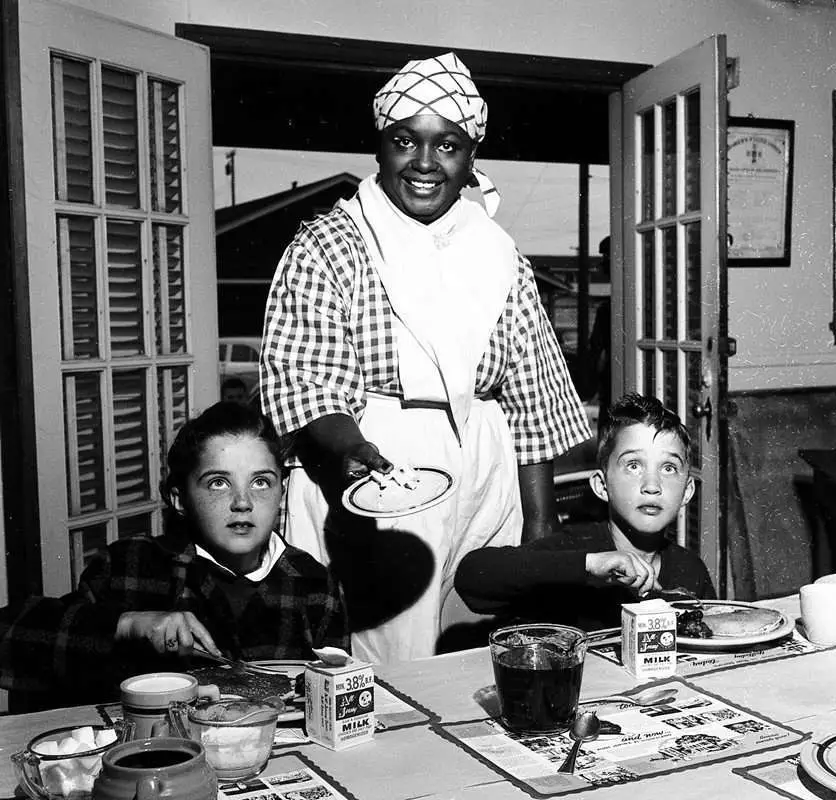 No one portrayed Aunt Jemima for ten years following the death of Nancy Green in 1923. Then in 1933, the Quaker Oats Company (which had acquired the company in 1926) hired Anna Robinson to play Aunt Jemima at the Chicago World’s Fair. At 350 pounds, she was much heavier than Green and she was darker in complexion. The Quaker Oats Company loved her look and she was sent to New York to pose for pictures. An entire campaign was designed around Robinson as Aunt Jemima and her association with celebrities. She had personal appearances and was photographed at some of the most famous places making pancakes for Hollywood royalty, radio personalities, and Broadway stars. The advertisements derived from those photography sessions “ranked among the highest read of their time”
No one portrayed Aunt Jemima for ten years following the death of Nancy Green in 1923. Then in 1933, the Quaker Oats Company (which had acquired the company in 1926) hired Anna Robinson to play Aunt Jemima at the Chicago World’s Fair. At 350 pounds, she was much heavier than Green and she was darker in complexion. The Quaker Oats Company loved her look and she was sent to New York to pose for pictures. An entire campaign was designed around Robinson as Aunt Jemima and her association with celebrities. She had personal appearances and was photographed at some of the most famous places making pancakes for Hollywood royalty, radio personalities, and Broadway stars. The advertisements derived from those photography sessions “ranked among the highest read of their time”
RELATED: Black Men and Public Space: Old Essay but Timeless Issue
Ironically, out of all the celebrities she posed with, none were more famous than Robinson herself. But Robinson wasn’t famous for being their peer; she was famous for being Aunt Jemima, their slave.
Having celebrities pose with Robinson brought the Aunt Jemima brand more sales and success than ever before. People have always wanted what celebrities have. Be it a designer dress, a car, or the ultimate status symbol: a Mammy.
In the first half of the 1900’s the Mammy was increasingly popular and was featured in a multitude of films, radio programs, and television shows. But no Mammy was more popular than Aunt Jemima.
The 1934 movie Imitation of Life told the story of a Mammy, Aunt Delilah, who inherited a pancake recipe. She gave the valuable recipe to Miss Bea, her boss who successfully marketed the recipe (‘Imitation of Life’).
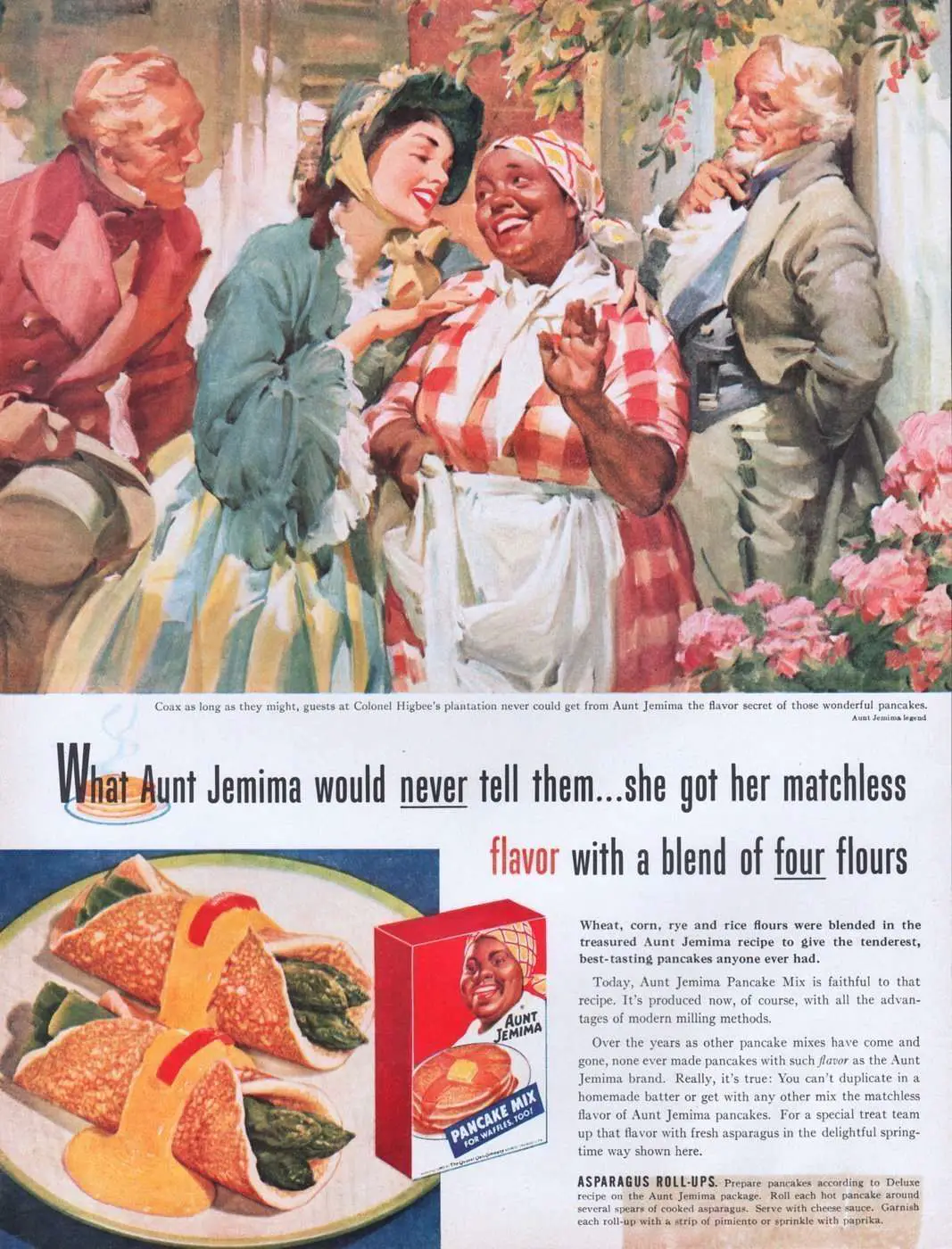
Aunt Jemima Asparagus Roll-Ups Recipe 1955 Ad. Food. Stock Number: 20817.
The Aunt Jemima Radio Show ran from 1930 to 1942. This Aunt Jemima was portrayed by the white actress Tess Gardella. Gardella was a blackface performer best known for playing the character on both stage and screen. The show included the Jemima Chorus. Between songs Aunt Jemima would explain why her pancakes were so easy to make and offered a “Happy Thought for the Day.” The show was essentially a minstrel act for radio.
The images of Aunt Jemima are part of the “Hateful Things Gallery”, a traveling exhibition that’s put together by the Jim Crow Museum of Racist Memorabilia in Big Rapids, Michigan. The museum, under Ferris State University, has a motto of “using objects of intolerance to teach tolerance and promote social justice.” Aunt Jemima’s images appear along side other pieces “that represent nearly 150 years of ani-Black, racist objects and images.”
By the 1950s Aunt Jemima could be found in newspapers, magazines, radio, and television. There were dolls, bowls, and salt and pepper shakers made in her likeness. People had grown up with Aunt Jemima as a part of their lives.
Despite its popularity, there has never been a time when the Aunt Jemima character has not been considered racist. According to Smith, Andrew F. in The Oxford Encyclopedia of Food and Drink in America, the famous Mammy came under increasing scrutiny in the 1950s and 1960s during the Civil Rights Movement.
RELATED: Booker T Washington vs W.E.B Du Bois: The Great Debate
Throughout the 1960s, the Quaker Oats Company lightened Aunt Jemima’s skin and made her look thinner in print images. In 1968, the company replaced her bandana with a headband, trimmed her waistline, and gave her a more youthful image. They removed the Southern Plantation settings and she no longer had a speaking role. If this was the Quaker Oats Company’s attempt to present Aunt Jemima as a less racist figure, they failed. By making her lighter, thinner, and younger, along with taking her off of the plantation and muting her voice, Aunt Jemima represented a house slave more than she ever had before.
RELATED: The 5 Most (Racially) Divisive Presidents in History
Local chapters of the NAACP began pressuring schools and fair organizers not to invite Aunt Jemima to appear. In 1967 the Quaker Oats Company canceled its television campaign and in 1970 they removed Aunt Jemima’s name from the Disneyland restaurant.
In 1989, after activists reportedly threw Quaker Oats into Lake Michigan and threatened boycotts in protest of the minstrel-inspired image, the company modified Aunt Jemima’s likeness once again. The Quaker Oats Company claimed that the change was to “celebrate the 100 year anniversary of the icon.” Aunt Jemima’s headband was removed and replaced with dark curly hair. She was also given pearl earrings. The company said it was repositioning the brand icon as a “black, working, grandmother” – words that have been used since the days of the minstrel show to describe the Mammy. Despite the ‘makeover’ Aunt Jemima continued to be the black, obedient, female domestic whose only pleasure was to serve you.
In 1993, the Quaker Oats Company debuted a series of television ads for the pancake mix featuring the singer Gladys Knight as a spokeswoman and using Aunt Jemima’s face only sparingly. They had the black, southern, Gladys Knight singing, smiling, and serving her ‘grandkids’. There was no need for the picture when they had the real thing. It was a page right out of the Davis Milling Company’s book.
Today there is only one place to find Aunt Jemima advertising and that is on the Aunt Jemima Website. The website is designed to look like an Aunt Jemima pancake package. There’s a thick red border on the bottom and the top of the page. There is even the Aunt Jemima picture with her name, or, the brand’s name, right below it in the top left corner just like on the boxes. The website uses a variety of tools in an attempt to separate the product from its past.
On the website if there is a caption, it’s made clear that it comes from the Aunt Jemima Company not Aunt Jemima. “Our products”, “Our Syrups”, “ . . . our corn meal mixes and quick grits.” Under the Our History tab there is a timeline. Like the rest of the website it is sparse. Both Nancy Green and Anna Robinson are included as portraying Aunt Jemima. It’s noted in 1989 Aunt Jemima got a ‘contemporary’ look. In the background there are snapshots of ads throughout the years featuring black families, white families, postcards, and pancakes. At the end of the timeline there’s the Today button. It reads: “Aunt Jemima Pancakes stand for warmth, nourishment and trust – qualities you’ll find in loving moms from diverse backgrounds who want the very best for their families.”
After learning of the product’s history – that which is not given on the website – one can read between the red lettering. “Aunt Jemima Pancakes stand for warmth, nourishment and trust – qualities you’ll find in loving moms (a Mammy) from diverse backgrounds (slavery) who want the very best for their families (masters).”
True to form, there is no mention of ingredients or taste. There’s no reference to food. Nourishment is listed as a quality you’ll find in the person – in this case the Slave Mammy – who you can count on to feed you, care for you, and work hard for you. You are her only priority and your ease and comfort is all she needs to be fulfilled. That is what this company is selling. It is what they have always sold. Despite what the company would like you to believe, the product has never been pancakes. Remember that next time you mix up and pour out some Aunt Jemima into your skillet for breakfast.







